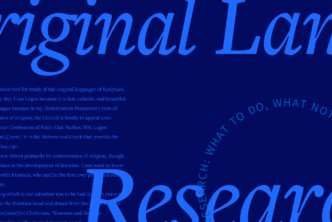The Bible was written thousands of years ago. The languages it was written in bear little resemblance to English. The people who wrote it saw the world differently than we do. The culture the Bible emerged from was radically different than the cultural context we read it in today.
When it comes to reading the Bible, Dr. John Walton says, “The message transcends the culture, but the form is culture bound.”
Take your place in the Bible’s audience
Being separated by culture or language barriers doesn’t mean that the Bible has no meaning for us today. It means we need to read it through a different lens to grasp its meaning.
Walton says, “If we are going to get the full focus of God’s revelation to us and get the full force of its authority, we have to try to take our place in that audience, and try to hear as that audience would have heard it.”
The Word of God is living and active (Hebrews 4:12). We don’t study the Bible’s to dissect it like an entomologist examines a dead bug. We study the Bible to apply it to our lives—today. The more we know about what the Bible was saying to its original audience, the more clearly we can understand what it is saying to us.
Read the Old Testament in context
Dr. Walton is a firm believer that our understanding of Near Eastern literature and cultural context can transform the way we understand and interpret the Bible—ultimately leaving us with a clearer picture of what God says today. That’s why he teaches a course on Old Testament genres—to provide a strong interpretive framework for his students to grapple with the Old Testament. To see how Scripture fits together, Dr. Walton encourages its readers to ask broader questions about the overall purpose of the Old Testament and God’s revelations through it.





